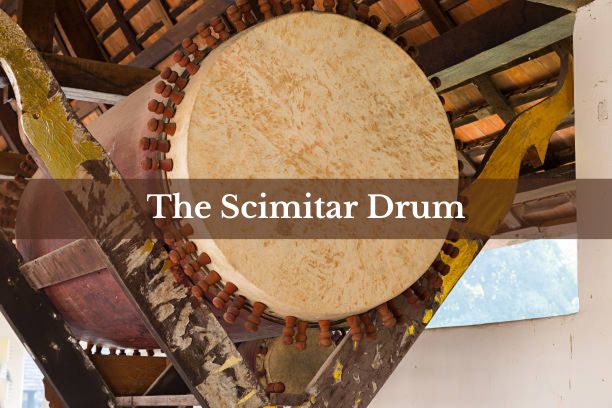Introduction
The scimitar drum is a unique and intriguing musical instrument that has captured the interest of musicians and historians alike. With its distinct design and rich cultural background, this drum stands out as an essential part of traditional and contemporary music. This article explores the history, construction, significance, and modern applications of the scimitar drum, shedding light on its enduring appeal.
The History of the Scimitar Drum
Origins and Early Development
The origins of the scimitar drum trace back to ancient civilizations where percussion instruments played an integral role in rituals, ceremonies, and entertainment. Influenced by Middle Eastern and African drum-making traditions, the scimitar drum evolved over time to become a symbol of rhythmic expression.
Cultural Significance
Historically, the scimitar drum has been used in various cultures for storytelling, religious practices, and battle marches. The distinct sound it produces makes it a valuable instrument in different musical ensembles, particularly in folk and tribal music.
Construction and Design
Materials Used
The scimitar drum is traditionally crafted from high-quality materials to ensure durability and acoustic excellence. Common materials include:
- Wood: The drum shell is typically made from hardwood, which enhances the resonance and tonal quality.
- Animal Skin: Traditionally, natural skins such as goat or cowhide were used for drumheads, though synthetic alternatives are now available.
- Metal Accents: Some variations of the scimitar drum feature metallic components that add to its decorative appeal and tonal variations.
Unique Features of The Scimitar Drum
- Curved Shell: The scimitar drum is often characterized by a slightly curved or scimitar-shaped shell, which influences its acoustics.
- Tunable Mechanism: Many modern scimitar drums incorporate tunable heads, allowing musicians to adjust pitch and resonance according to their preference.
- Handcrafted Details: Intricate carvings and designs often adorn the drum, reflecting the artistry and cultural heritage behind its construction.
Playing Techniques
Traditional Methods
The scimitar drum is typically played using a combination of hand strikes and mallets. Different cultures have developed distinct playing styles that emphasize rhythm, tone, and dynamics.
Modern Approaches of The Scimitar Drum
With the evolution of percussion techniques, contemporary musicians incorporate the scimitar drum into various music genres, including jazz, fusion, and world music. Techniques such as finger drumming, brush playing, and electronic modifications have expanded the drum’s versatility.
The Scimitar Drum in Contemporary Music
Fusion with Other Instruments
The scimitar drum is often combined with other percussion instruments such as djembes, congas, and bongos to create rich, layered rhythms. This fusion enhances musical compositions and allows for creative experimentation.
Influence on Percussion Trends
Modern percussionists continue to explore the possibilities of the scimitar drum, integrating it into performances, recordings, and live events. Its distinctive sound adds depth and texture to various musical pieces.
Maintenance and Care
Cleaning and Preservation
To maintain the scimitar drum’s longevity and sound quality, regular cleaning is essential. Using appropriate cleaning agents for wood and drumheads helps preserve its integrity.
Storage and Handling
Proper storage in a temperature-controlled environment prevents damage due to humidity and temperature fluctuations. Additionally, handling the drum with care minimizes wear and tear.
Conclusion
The scimitar drum remains an essential instrument in both traditional and modern music. Its rich history, unique design, and versatile applications make it a favorite among percussionists worldwide. Whether used in cultural ceremonies or contemporary performances, the scimitar drum continues to captivate audiences with its powerful rhythms and distinctive sound.
FAQs
What is the scimitar drum made of?
The scimitar drum is typically made from hardwood, natural or synthetic drumheads, and sometimes metal accents for decoration.
How is the scimitar drum played?
It is played using hand techniques or mallets, with different strokes producing varied tones and rhythmic patterns.
Where does the scimitar drum originate from?
Its origins can be traced to ancient Middle Eastern and African percussion traditions, where it played an important cultural role.
Can the scimitar drum be used in modern music?
Yes, it is often integrated into contemporary genres such as jazz, fusion, and world music to add unique rhythmic elements.
How do you maintain a scimitar drum?
Regular cleaning, proper storage, and careful handling help preserve its quality and prolong its lifespan.

